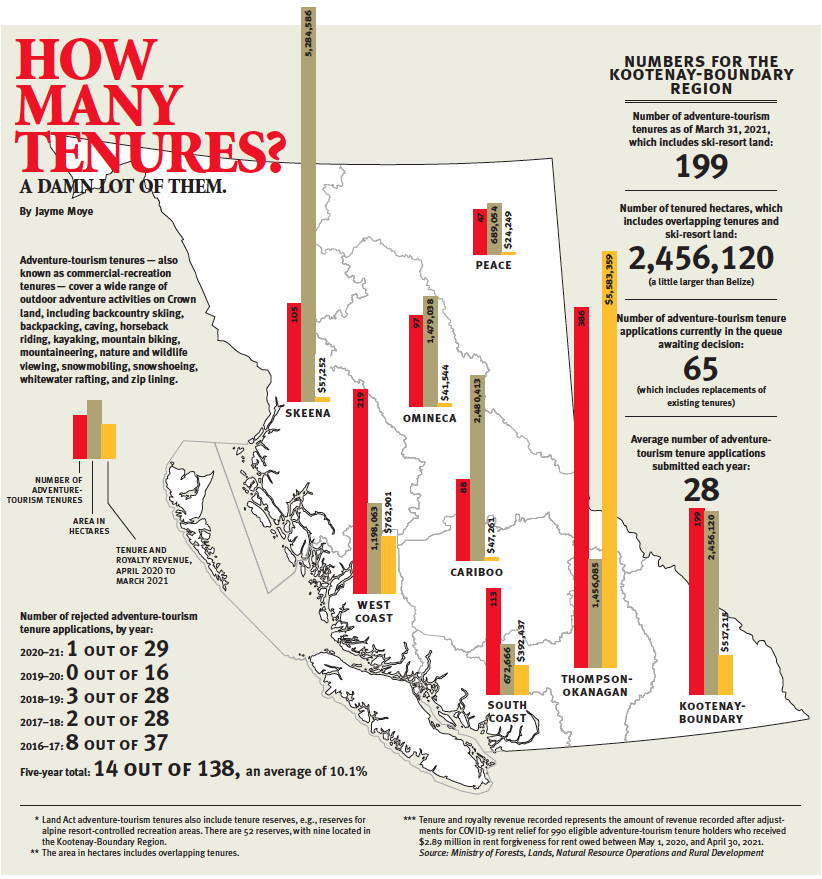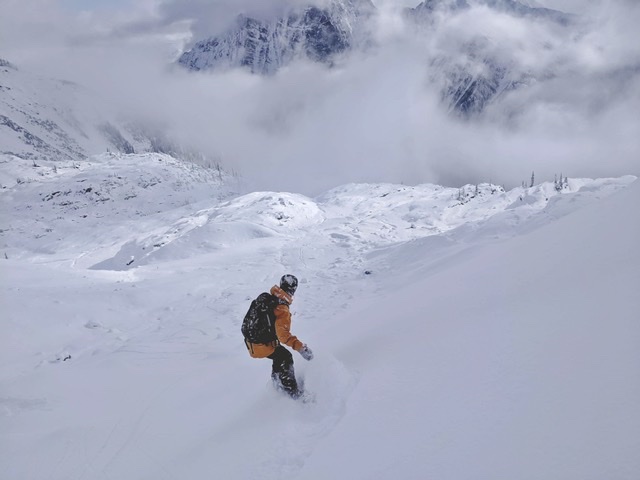THE DIVISIVENESS OF TENURE, USE AND MANAGEMENT OF PUBLIC LAND
As one of the most divisive topics related to outdoor recreation in BC., the conversation around tenure and public land use (especially in the Kootenays) often turns into a drawn-out and heated debate with little to no resolution. There have been several instances over the years where hopeful individuals have brought forth an adventure tourism idea and been absolutely crucified by the force of public response in rejection of said idea.
It’s very rarely personal. Unfortunately, in the last twenty-or-so-odd years though, the area has been inundated with a wide variety of commercial tenure applications and grants (heli and cat-skiing, snowmobile use, multi-use, ski touring, independent guiding op or ski resort) that reduce the amount of public land available for recreation, while also making those areas left even less accessible for general public. As more people feel pushed out of local turf zones due to commercial operations, the less inclined they are to support any new applications in the area. It doesn't help that only about 10% of new applications have been rejected within the last 5 years...

This is why the debate is so heated. It’s a constant land-use battle between the public, entrepreneurs or operations, Ministry of Forests, wildlife protection organizations or representatives, First Nations bands, and private land owners. However, if your local government does not prioritize your region’s land use planning, it’s not an absolute game-ender. Some areas with highly contentious land-use zones have brought members together from opposing recreation groups (similar to the creation of the Golden Backcountry Conflict Resolution Committee) to design a non-legislative plan as to how public land will be used, divided and/or shared amongst different groups.
I could go on and on. But, ultimately, a Nelson-based journalist for Kootenay Mountain Culture Magazine has already done the hard work. Check out this article by Jayme Moye to read more about the divisiveness of tenure and land-use within the Kootenays, and why this has reached its boiling point within the outdoor industry.









